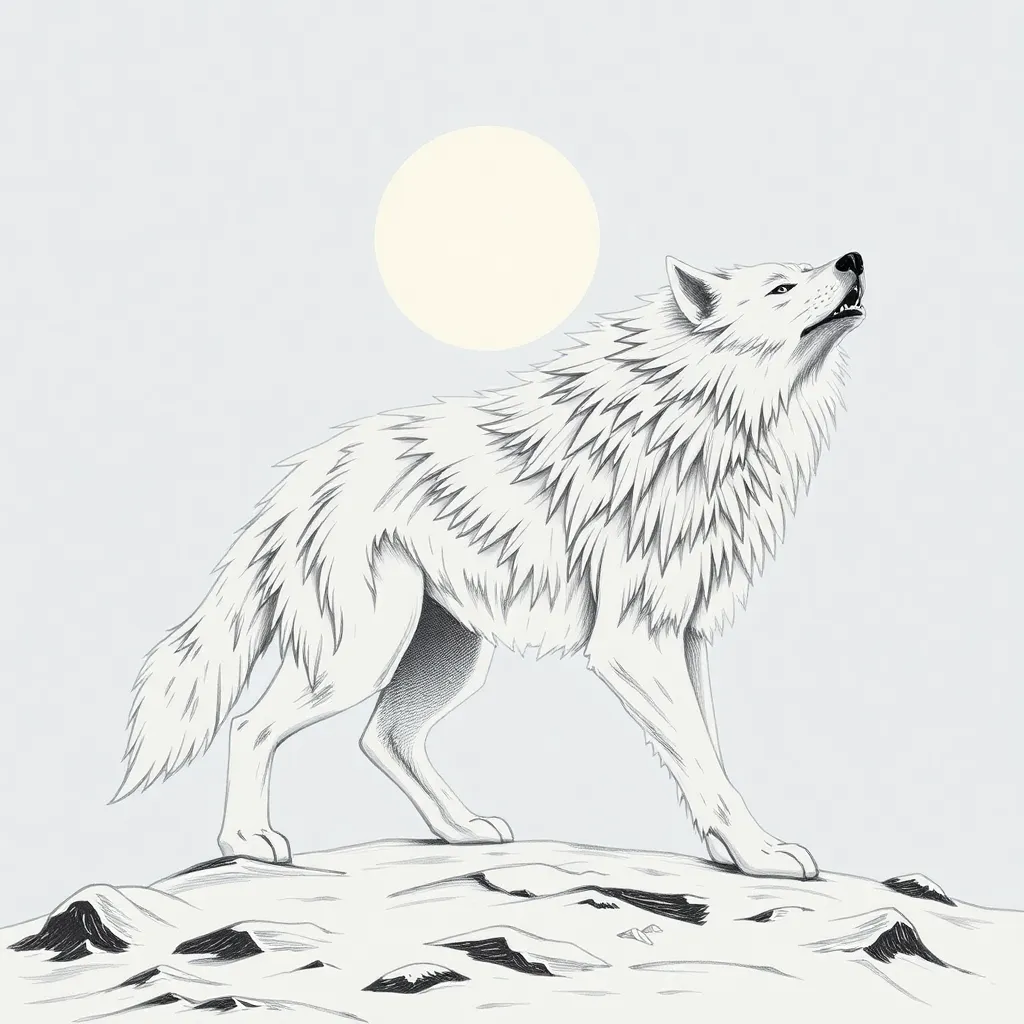Fenrir in Norse Poetry: The Wolf’s Presence in Eddic and Skaldic Verse
I. Introduction
Fenrir, the monstrous wolf of Norse mythology, holds a unique and terrifying place within the pantheon of gods and creatures. As the offspring of Loki and the giantess Angerboda, Fenrir’s story is intertwined with themes of fate, chaos, and destruction. His presence in Norse poetry, particularly in the Eddic and Skaldic traditions, has played a crucial role in preserving the narratives surrounding this formidable figure.
Poetry, especially in the oral traditions of the Norse, served as a vessel for storytelling, allowing myths to be passed down through generations. The intricate verses encapsulated not only the tales of gods and heroes but also the cultural values and beliefs of the Norse people. This article aims to explore Fenrir’s representation in both Eddic and Skaldic poetry, highlighting his significance and the themes that arise from his character.
II. The Myth of Fenrir
A. Origins and lineage of Fenrir
Fenrir is one of the three children of Loki, the trickster god, and Angerboda, a giantess. His siblings include Jörmungandr, the world serpent, and Hel, the ruler of the underworld. Fenrir’s lineage marks him as a being of chaos and destruction, destined to play a vital role in the events of Ragnarök, the end of the world in Norse cosmology.
B. Prophecies surrounding Fenrir’s role in Ragnarök
According to the prophecies, Fenrir is foretold to break free from his chains during Ragnarök and join the giants in their battle against the gods. It is prophesied that he will kill Odin, the chief of the gods, symbolizing the triumph of chaos over order. This dire fate casts Fenrir not just as a mere beast, but as a harbinger of doom and a critical player in the cosmic battle.
C. Symbolism of Fenrir as a chaotic force
Fenrir embodies chaos and destruction, representing the uncontrollable forces of nature. His very existence challenges the established order of the gods and signifies an inevitable confrontation with fate. As a chaotic force, Fenrir serves as a reminder of the fragile balance between order and disorder in the world.
III. Eddic Poetry: The Poetic Edda
A. Overview of the Poetic Edda as a source
The Poetic Edda is a collection of Old Norse poems that serves as a primary source for Norse mythology. It comprises various mythological and heroic poems, many of which delve into the stories of gods, giants, and creatures like Fenrir. The Edda’s narratives are essential for understanding the cultural and religious beliefs of the Norse people.
B. Key poems featuring Fenrir
1. “Völuspá” and its prophetic elements
“Völuspá,” or “The Prophecy of the Seeress,” is one of the most significant poems in the Poetic Edda. It recounts the creation of the world and foretells its destruction during Ragnarök. Fenrir is mentioned as a pivotal figure in this prophecy, symbolizing the chaos that will ensue when he breaks free. The poem emphasizes the inevitability of fate, as even the gods cannot escape their destinies.
2. “Grímnismál” and the portrayal of Fenrir
“Grímnismál,” another important poem, provides insight into the nature of the gods and their relationship with Fenrir. In this poem, it is revealed that Fenrir is feared by the gods, who recognize the threat he poses. The poem highlights the tension between the gods and Fenrir, showcasing the wolf’s significance as a creature of dread and power.
C. Analysis of literary techniques used
The Poetic Edda employs various literary techniques to convey its themes, including:
- Alliteration: The use of similar sounds at the beginning of words creates a rhythmic quality.
- Kenning: A metaphorical expression, such as “battle-swine” for “warrior,” enriches the language.
- Imagery: Vivid descriptions evoke powerful emotions and visuals, particularly in scenes of conflict.
IV. Skaldic Poetry: The Craft of the Skalds
A. Characteristics of Skaldic poetry
Skaldic poetry, distinct from the Eddic tradition, is characterized by its complexity and elaborate style. Skalds, the poets of the Norse courts, composed verse that was often intricate, utilizing a vast array of poetic devices. Skaldic poetry was typically composed in praise of kings, heroes, or gods, and featured historical and mythological themes.
B. Instances of Fenrir in Skaldic works
1. Notable skalds and their compositions
Several skalds have referenced Fenrir in their works, including:
- Snorri Sturluson: In his “Prose Edda,” Snorri elaborates on Fenrir’s story and his relation to other mythological figures.
- Þjóðólfr of Hvinir: Known for his skaldic verse, Þjóðólfr mentions Fenrir in the context of prophetic tales.
2. Specific verses referencing Fenrir
In various skaldic verses, Fenrir is portrayed with a sense of grandeur and menace. These verses often emphasize his strength and the fear he incites in the gods, contrasting with the heroic attributes typically celebrated in skaldic poetry.
C. Comparison between Eddic and Skaldic portrayals
While both Eddic and Skaldic poetry feature Fenrir, their approaches differ significantly:
- Eddic poetry: Focuses on the mythic and prophetic aspects, presenting Fenrir as a symbol of fate.
- Skaldic poetry: Emphasizes individual achievements and the emotional weight of Fenrir’s presence in relation to the gods.
V. Themes Associated with Fenrir
A. The concept of fate and inevitability
Fenrir’s story is deeply intertwined with the concept of fate. His destined role in Ragnarök signifies the inevitability of chaos, suggesting that no entity, divine or otherwise, can escape their fate.
B. The duality of creation and destruction
Fenrir embodies the duality of creation and destruction. While he is a product of divine lineage, his nature leads to destruction, illustrating the complexities of existence in Norse mythology.
C. The representation of fear and power
Fenrir serves as a representation of fear and power. His immense strength and the fear he instills in the gods reflect the primal forces of nature and the unpredictability of life and death.
VI. Fenrir’s Cultural Impact
A. Fenrir’s influence on later literature and art
Fenrir’s legacy extends beyond Norse mythology, influencing various literary and artistic movements throughout history. His character has been reinterpreted in countless works, symbolizing the struggle against chaos and the inevitability of fate.
B. Modern interpretations and adaptations
In modern literature, Fenrir is often portrayed in novels, films, and video games, typically emphasizing his monstrous attributes. These adaptations often explore themes of power, rebellion, and the consequences of unchecked chaos.
C. Fenrir in popular culture
Fenrir has made appearances in popular culture, such as:
- Marvel Comics: Fenrir is featured as a formidable foe in various storylines.
- Video Games: Titles like “God of War” and “Assassin’s Creed Valhalla” incorporate Fenrir into their narratives, showcasing his legendary status.
VII. Scholarly Perspectives
A. Key scholarly interpretations of Fenrir in poetry
Scholars have studied Fenrir’s portrayal in poetry extensively, examining the significance of his character in the context of Norse beliefs. Various interpretations suggest that Fenrir symbolizes the uncontrollable aspects of nature and the inevitability of fate.</p



